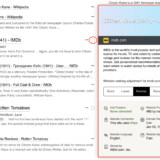Apple App Store: Neue Regeln für Mirror-Apps, Werbung und Datenschutz sowie Testphasen für alle Apps

Die App Store Review Guidelines sind Apples Regeln, an die sich Entwickler halten müssen, wenn sie eine App über den App Store anbieten möchten. Das kann man durchaus als Gängelung betrachten, allerdings kommt es auch nicht von ungefähr, dass der App Store die Nummer Eins unter den digitalen Einkaufsläden ist. Nicht immer sind diese Regeln für jeden nachvollziehbar, aber sie existieren eben, ob es einem gefällt oder nicht. Man hat ja zum Glück immer die Wahl und ist nicht gezwungen, ein bestimmtes System zu nutzen – auch wenn sich das mancher gerne einredet.
Zuletzt kamen die Regeln wieder einmal ins Gespräch, da die Steam Link-App von Valve plötzlich doch nicht freigegeben wurde. Schaut man sich nun die neuen Review Guidelines an, versteht man vielleicht auch warum, sie beschäftigen sich unter anderem damit, was derartige Mirror-Apps dürfen und was nicht:
Multiplatform Services: Apps that operate across multiple platforms may allow users to access content, subscriptions, or features they have acquired elsewhere, provided those items are also available as in-app purchases within the app. You must not directly or indirectly target iOS users to use a purchasing method other than in-app purchase, and your general communications about other purchasing methods must not discourage use of in-app purchase.
Ebenfalls auf die Mirror-Apps bezogen ist folgende Passage, die noch einmal erklärt, dass der Zugriff auf einen eigenen PC erfolgen muss. Wird ein Kauf angeboten, muss dieser auf dem Host-Gerät abgewickelt werden, dann kann auch auf eine Bereitstellung des Inhalts via In-App-Kauf verzichtet werden:
(a) The host device is a personal computer owned by the user, and both the host and client must be connected on a local and LAN-based network.
(b) Any software or services appearing in the client are fully rendered on the screen of the host device, and may not use APIs or platform features beyond what is required to stream the Remote Desktop
(c) All account creation and management must be initiated from the host device.
(d) The UI appearing on the client does not resemble an iOS or App Store view, does not provide a store-like interface, or include the ability to browse, select, or purchase software not already owned or licensed by the user. For the sake of clarity, transactions taking place within mirrored software do not need to use in-app purchase, provided the transactions are processed on the host device.
Da spricht also nicht mehr viel gegen eine Steam Link-App oder ähnliche Apps, die solche Funktionalität bieten. Das sind aber natürlich nicht die einzigen Änderungen, Neuerungen gibt es auch bei „Testangeboten“, die bislang nur für Abo-Modelle zur Verfügung standen.
Testzeiträume können nun von allen Apps angeboten werden, Nutzer könnten so zum Beispiel den vollen Umfang einer App für ein paar Tage testen, um sich dann eben für oder gegen einen Kauf zu entscheiden:
Non-subscription apps may offer a free time-based trial period before presenting a full unlock option by setting up a Non-Consumable IAP item at Price Tier 0 that follows the naming convention: “14-day Trial.”
Prior to the start of the trial, your app must clearly identify its duration, the content or services that will no longer be accessible when the trial ends, and any downstream charges the user would need to pay for full functionality. Learn more about managing content access and the duration of the trial period using Receipts and Device Check.
Interessant ist auch ein neuer Punkt, bei dem es um Werbung geht. Demnach muss bei der Anzeige von Werbung in einer App darauf geachtet werden, dass die Werbeanzeige für die gleiche Altersgruppe wie die App selbst geeignet ist. In einer App für Kinder ab 4 Jahren sollte also zum Beispiel keine Werbung für ein Game ab 10 oder ähnliches sein:
Advertising: Ads displayed in an app must be appropriate for the app’s age rating, allow the user to see all information used to target them for that ad (without requiring the user to leave the app), and may not engage in targeted or behavioral advertising based on sensitive user data such as health/medical data (e.g. from the HealthKit APIs), school and classroom data (e.g. from ClassKit), or from kids (e.g. from apps in the Kids Category), etc.
Interstitial ads or ads that interrupt or block the user experience must clearly indicate that they are an ad, must not manipulate or trick users into tapping into them, and must provide easily accessible and visible close/skip buttons large enough for people to easily dismiss the ad.
Dieser Absatz schränkt auch die Nutzung persönlicher Daten für das Ad-Targeting ein, außerdem muss der Nutzer angezeigt bekommen, welche Informationen über ihn genutzt wurden, um diese Werbung anzuzeigen.
Den Akku und Prozessor schonend dürfte hingegen eine neue Regel bezüglich des Minings von Kryptowährungen sein. Dürfen Apps natürlich nicht direkt auf dem Gerät machen, wohl aber in der Cloud:
(i) Wallets: Apps may facilitate virtual currency storage, provided they are offered by developers enrolled as an organization.
(ii) Mining: Apps may not mine for cryptocurrencies unless the processing is performed off device (e.g. cloud-based mining).
(iii) Exchanges: Apps may facilitate transactions or transmissions of cryptocurrency on an approved exchange, provided they are offered by the exchange itself.
(iv) Initial Coin Offerings: Apps facilitating Initial Coin Offerings (“ICOs”), cryptocurrency futures trading, and other crypto-securities or quasi-securities trading must come from established banks, securities firms, futures commission merchants (“FCM”), or other approved financial institutions and must comply with all applicable law.
(v) Cryptocurrency apps may not offer currency for completing tasks, such as downloading other apps, encouraging other users to download, posting to social networks, etc.
Die kompletten Review Guidelines gibt es von Apple an dieser Stelle, die Auswirkungen der Änderungen werden dann auch irgendwann beim Nutzer ankommen.
via 9to5Mac









Es sprach auch vorher nichts gegen eine Steam-Link App. Tester haben aber zwei Wege gefunden um in der App Inhalte per CC oder anderen Bezahlmethoden zu kaufen. Darum ging’s: https://apple.insidercdn.com/gallery/26177-36831-steam-link-purchase-ios-l.jpg